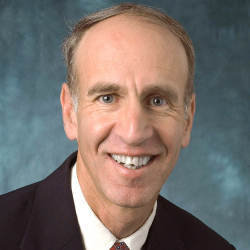
Many of you have expressed the desire and need for a simple slide deck that you can use in various contexts to summarize and make the case for the need for increased computing enrollments in universities and K-12. We are providing that to you.
The career outlook for computer science majors looks great. Computing ranks in the top 10 fastest-growing major occupational areas, growing 22% annually and outpacing the nation’s overall growth of 14%. It also is one of the best paying occupational areas, with the average computing professional earning $78,730 annually in 2011, roughly 75% higher than the average salary nationwide of $45,230.
With 1.5 million computing jobs to fill by 2020, the growth of our economy relies on the ability of employers to obtain qualified employees with computing skills and our ability to ensure that graduates are educated for the needs of 21st century jobs. Expanding computer science and related programs at American universities will improve our ability to prepare students to use, understand, and apply the computational knowledge, skills, and core competencies considered essential by employers across a variety of industries. It also will create opportunities for further revenue-generating activities, such as industry partnerships and collaborations, research commercialization, and extension education and training programs to upgrade the high-tech skills of the current workforce.
We must also spark an interest in a whole new generation who will advance computing and technology. Among the troubling trend lines in computing education at K-12, the percentage of high school students earning credits in computer science has declined from 25% to 19% since 1990. Further, only nine states nationwide currently allow a course in computer science to count as a "core" credit for high school graduation. In 2011, only 2% of students taking AP science exams took the AP Computer Science exam. Overall, AP Computer Science exams comprised less than 1% of all AP exams.
We encourage you to use the slide deck (see below) to make the arguments for the quality of computing employment opportunities, the importance of expanding computer science at all levels, the need to increase the number of qualified educators, and the need to promote inclusivity and diversity so that more Americans can participate in the high-tech economy.
The slide deck incorporates data from the U.S. Department of Labor, the National Science Foundation, and the National Center for Education Statistics, as well as AP data from the College Board, survey data from CSTA, and the 2010 ACM-CSTA report, "Running on Empty: The Failure to Teach K-12 Computer Science in the Digital Age."
If you have questions or would like to learn more, please feel free to contact Cameron Wilson, the Director of the Office of Public Policy for ACM: cameron.wilson@acm.org
Download the PowerPoint presentation: http://www.acm.org/public-policy/2012_CS_Slides_Aug.pptx
John White is the ACM Executive Director and Chief Executive Officer.
Robert "Bobby" Schnabel is Chair of the ACM Education Policy Committee and Dean of the School of Informatics at Indiana University.



Join the Discussion (0)
Become a Member or Sign In to Post a Comment